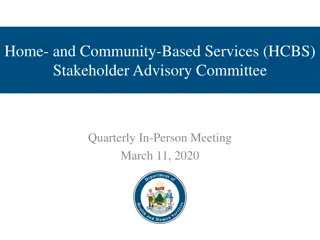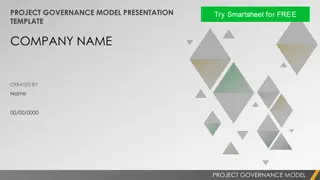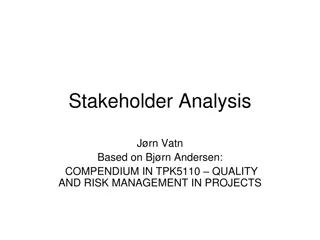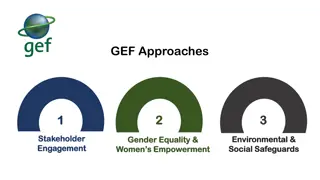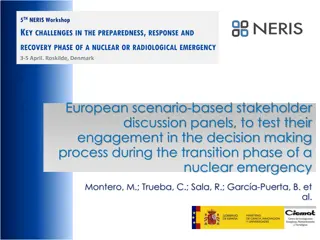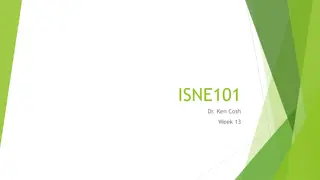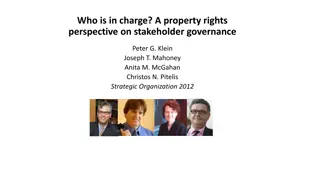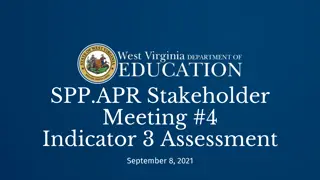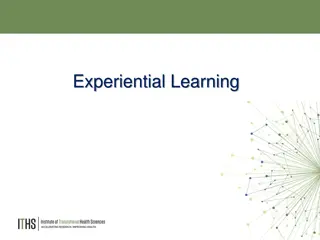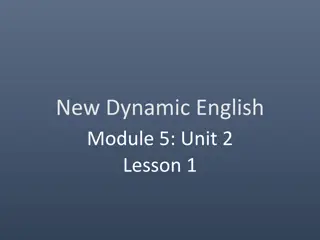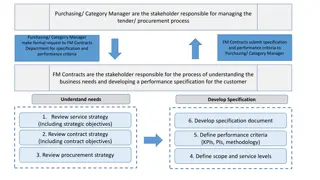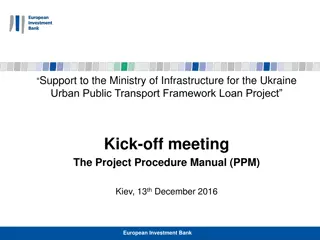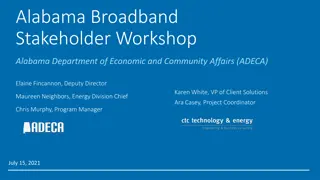TERRE Project Stakeholder Workshop Highlights and Future Directions
Delve into the recent TERRE Stakeholder Workshop, exploring topics such as project introduction, participating TSOs, accession timelines, project structure, and future projections. Get insights on the future of the TERRE project with legal context changes and clearings implementation details discussed during the workshop.
Download Presentation

Please find below an Image/Link to download the presentation.
The content on the website is provided AS IS for your information and personal use only. It may not be sold, licensed, or shared on other websites without obtaining consent from the author.If you encounter any issues during the download, it is possible that the publisher has removed the file from their server.
You are allowed to download the files provided on this website for personal or commercial use, subject to the condition that they are used lawfully. All files are the property of their respective owners.
The content on the website is provided AS IS for your information and personal use only. It may not be sold, licensed, or shared on other websites without obtaining consent from the author.
E N D
Presentation Transcript
TERRE Trans European Replacement Reserves Exchange TERRE Stakeholder Workshop 17thMay 2024
Agenda TERRE Stakeholder Workshop # TOPICS Timing (CET) 1 Introduction 9:00 2 Future of the TERRE project 9:15 3 Questions & Answers 9:45 End of the meeting 10:15 19/09/2024 2
Topic 1: Introduction 19/09/2024 3
1. Introduction TERRE project - Participating TSOs TERRE Members Region 1 France (RTE) Italy (TERNA) Portugal (REN) Spain (RE) Switzerland (SG) Members Observers Project members Region 2 Czech Republic (CEPS) Poland (PSE) (not connected yet) Observers Hungary (MAVIR) Project Members Germany (Amprion) Norway (Statnett) Sweden (Svk) 19/09/2024 4
1. Introduction Accession timeline past and foreseen Country TSO Date of accession Czech Republic EPS a.s. 6 January 2020 Spain RE - Red El ctrica de Espa a S.A.U 3 March 2020 Portugal REN Rede El ctrica Nacional, S.A 29 September 2020 Switzerland Swissgrid AG 8 October 2020 France RTE - R seau de Transport d'Electricit 2 December 2020 Italy Terna - Rete Elettrica Nazionale SpA 13 January 2021 United Kingdom National Grid Electricity System Operator Ltd Exit from the project Poland PSE - Polskie Sieci Elektroenergetyczne S.A. Not connected yet 19/09/2024 5
Cost and time estimations to implement 96 clearings Structure of the project by lot The TERRE project is divided in 6 different lots that cover all functionalities and services needed to implement and ensure the operations of the platform. Lot B2: Unicorn (CZ) Lot B1: Artelys (FR) Optimization/Clearing algorithm IT interface/data management Lot E: JAO (LX) Lot C: : Unicorn (CZ) Lot D: EPEX SPOT (NL) Hosting IT monitoring service Financial Settlement Lot F: Testing Main modules Services 19/09/2024 6
Topic 2: Future of the TERRE project 19/09/2024 7
Information on the future of the project Reminder on the legal context that frames the switch to 96 clearings Legal context Today the RR process consists of 24 daily gates with 24 clearings per day. This design was mainly chosen because, at the time of the introduction of the RR platform, the cross-border scheduling step was 60 minutes on most borders. The legal framework prescribes the following changes: According to the current IF, the cross-border scheduling step (XB SS) must be reduced to 15 minutes, on all borders. That would allow an increase in the numberof daily gates for the RR process. (RR IF article 11.5) Together with the reduction of the cross-border scheduling step, EBGL also prescribes a combined reduction of the market time unit (MTU) and the Imbalance Settlement Period on both balancing markets and energymarkets (EBGL Art 53(1)). The RR platform already allows the use of a 15-minute MTU, while only performing 24 daily clearings. On the other hand, the number of daily gates for the cross-zonal intraday will increase to 96 gates in the future (Article 8 of Reg.(EU) 2019/943). Also, as set by the art. 24.2(b) of EBGL, the balancing energy gate closure time shall not be before the intraday cross-zonal gate closure time Therefore, the new number of intraday gates necessarily leads to an increase in the number of daily gates for the RR process to 96 clearings. Public survey (29/05/2023 to 07/07/2023) To move forward on the implementation of 96 clearings in the TERRE platform and ensure the future RR process will stay interesting for stakeholders, TSOs launched a public survey to gather feedback on several possible design options of the RR process. The results of the public survey indicate that option 2, 96 daily gates with reduced timings, seemed to be the best compromise, yet not very attractive for stakeholders (perhaps because of similarities with MARI). 19/09/2024 8
Information about the future of the project Forced short lifetime of the project (EMDR) After months of continuous exchanges with RR NRAs, TERRE TSOs decided to not implement 96 clearings in the TERRE platform, because of the following three main reasons: The forced short lifetime of the project (Electricity Market Design Regulation (EMDR)) A new EMDR (Electricity Market Design Regulation) has been adopted. In this new text, there is a change which is highly impacting TERRE: (5) Article 8 is amended as follows: (a) paragraph 1 is replaced by the following: NEMOs shall allow market participants to trade energy as close to real time as possible and at least up to the intraday cross-zonal gate closure time. By 1 January 2026, the intraday cross-zonal gate closure time shall be at the earliest 30 minutes ahead of real time. An intraday cross-zonal gate closure time of 30 minutes is clearly not compatible with the RR process. Today s process timing is the following: H-30 New ID GCT H-40 RR TSO Energy bid GCT H-55 RR Balancing energy GCT RR process H H+60 Activation period Delivery period H-12 H-25 mFRR process mFRR TSO Energy bid GCT mFRR Balancing energy GCT The new EMDR is forcing the end of the TERRE project as the new IDGCT will have to be applied starting from January 2026 (with possible derogations). Even if the process timing and FAT are drastically reduced, there is not enough time for the RR process. In this context, the investing on the TERRE platform to implement evolutions is significantly less advantageous. 9
Information about the future of the project Technical limitations and central platform implementations Technical limitations Today RR process allows a Full Activation Time (FAT) of 30 minutes and a delivery period up to 60 minutes. The final design of the RR process with 96 clearings would still allow a FAT of 30 minutes but the maximum delivery period would only be 15 minutes as in MARI. That process with 96 clearings will cause significant loss of liquidity and a very similar process to MARI. Then the added value of the RR process will be significantly lower than today (very different product, market and need than MARI). Cost of implementations Central platform TERRE TSOs gathered cost and time estimations to implement to 96 clearings in the TERRE platform for lot B1 and B2, which are lots most impacted by the change. Nevertheless, lot C, D, E and F should be also impacted by the switch to 96 clearings in a less important way. TSOs made some rough estimations measure these costs. to try to Most impacted lot with important implementations needed Main modules Services 19/09/2024 10
Information about the future of the project Conclusion for costs of implementation for the central platform Conclusion The cost and time needed to implement all required changes to adapt the TERRE platform (optimization algorithm, IT interface and all data management) to operate with 96 clearings are estimated around: 14 months and 700 1 500 k - one-time costs (coming from IT suppliers estimations for lots B1 and B2) It is important to note these costs are not including lots C, D, E and F and local implementations (on TSOs and BSPs side). So, the real cost shall be expected to be higher. 19/09/2024 11
Information about the future of the project Costs of local implementations Local implementation Cost and time estimations for internal implementations needed to switch to 96 clearings in TERRE have been carried out by TSOs: On average, the estimated cost for these modifications is 730 k per TSO. A variety of modifications in internal IT systems would be needed: changes in bid structure, validations, input/output messages, calculations, cross border scheduling step, etc. The estimated duration for the modifications varies from 4 to 12 months, being ready for a Go Live with the changes from Q1 2025 at the earliest and Q1 2026 for the latest. Changes at the side of RR Balancing Services Providers would have to take place as well. Changes would differ from country to country. 19/09/2024 12
Information about the future of the project Why TERRE TSOs decided to not implement 96 clearings in the TERRE platform? If TERRE TSOs would decide to implement 96 clearings in the platform, significant costs would have to be engaged to implement a less attractive RR process. The solution could be in operation in Q1 2026 earliest, at the same period of the entry into force of the EMDR, forcing the end of the TERRE project (without derogations). Thus, TERRE TSOs decision is not coming from a specific will to end the project, but from trying to adapt to the new regulation and find the most profitable scenario for all actors. Because of legal constraints, the outcome of the survey, implementation efforts, and costs at the TERRE project level, as well as at the TSOs and BSP side, TERRE TSOs decided not to implement 96 clearings in the TERRE platform. This decision means the project will have to be phased out. The following slide presents in detail how TSOs aim to organize themselves to end the project in a coordinated and relevant way. 19/09/2024 13
Information about the future of the project Foreseen impact of the end of the TERRE project Investigations have been conducted by the TERRE TSOs on their respective sides to ascertain the potential impact of the termination of the TERRE project, particularly in terms of the loss of liquidity in Balancing Energy bids. For most TSOs, a decrease in liquidity amounting to hundreds of MW in both upward and downward directions is expected. However, for some TSOs, it is anticipated that there will be no impact on liquidity due to a full transition to MARI being planned. As a consequence, it is also projected that there will be reduced competition in the market, which could lead to an increase in clearing prices for balancing energy. 19/09/2024 14
Information about the future of the project How will the end of the project be organized? TERRE TSOs decided to follow the below scenario that conducts to a smooth end of the TERRE project, in a coordinated manner, considering all TSOs constraints. The end of operations is planned at end 2025: This planning is based on the current expectation on the implementation of 96 clearings in CZ ID for each TSOs. The planning for TERRE might change if the planning for CZ ID changes. 2024 2025 2026 Q1 Q2 Q3 Q4 Q1 Q2 Q3 Q4 Q1 Q2 15 - 60 resolution and 24 gates Current RR process Decommissioning of the platform Key elements of the scenario for the future of the project : TERRE remains at 24 gates (no implementation of 48/96 gates) TSOs will use TERRE as long as the date of implementation of 96 gates in CZ ID allows The applied Cross Border Scheduling Step can be different between boarders and needs to be aligned between the responsible TSOs of a specific boarder (same as today, e.g. 30min cross boarder scheduling step on CH-FR boarder). TSOs are free to decide when to stop being operational TSOs while respecting legal and operational conditions. 19/09/2024 15
Topic 3: Questions and answers 19/09/2024 16






